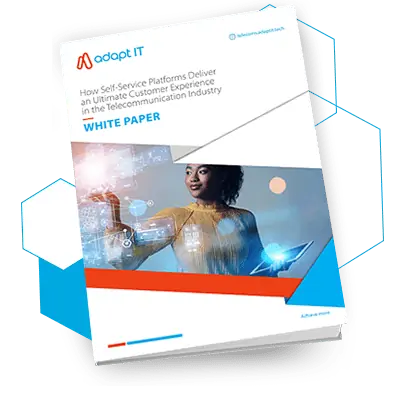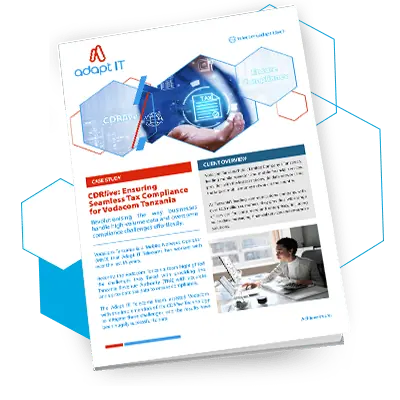Table of Contents
ToggleThere is no doubt that digital transformation is changing the way business is being conducted. One of the biggest enablers of digital transformation in business is the use of cloud computing. This creates a unique business opportunity for Telcos to fulfill the need for information technology resources that improve and streamline business efficiency, processes, and operations. To understand how cloud computing can be used by Telcos to deliver on IT resources, we need to understand what it is, how it works, the benefits and how to use it in business, we expand on this below.
What is Cloud Computing?
Cloud Computing refers to different types of hosting services that are delivered through a network via the internet. The benefit of Cloud Computing for businesses is the flexibility and versatility it has to adapt to your unique business needs and requirements. Cloud Computing services often include access to servers, databases, software-network, analytics as well as other computing functions and applications.
Many businesses have started to adopt cloud computing as it reduces the need for physical hardware like hard drives, discs, USB drives, or physical servers. This not only saves on cost and storage space but also enables users to gain on-demand access to computing resources, files, applications, servers, data storage, etc., from anywhere and at any time. Cloud-based services offer more scalable, agile, flexible, and reliable IT infrastructures that enhance business performance and growth, as these solutions offer:

- On-demand self-service –this has self-service capabilities allowing end-users to access applications, data, analytics, etc. themselves, thereby eliminating the need for IT administrators to manage these functions. This also improves customer experience.
- Broad network access – this solution allows users to connect to the cloud from anywhere, at any time, using any device as long as they have an internet connection.
- Resource pooling – cloud providers service numerous customers using the same physical resources, which often makes this a more cost-effective solution.
- Rapid elasticity – the rapid elasticity capability of cloud computing allows for enhanced scalability. Businesses are able to scale up or down, depending on their growth requirements or needs.
- Measured service – resources are generally measured on a pay as you go or pay as you use basis. This allows you to only pay for what resources and workloads you use.

There are three specific cloud computing models on the market. These include.
- Software-as-a-Service (SaaS): this is the most popular and widely used. The software or applications are hosted in the cloud where users can access them via web browsers, mobile applications, or an API (Application Program Interface) that integrates with a desktop, mobile devices, or operating system. This type of service is often paid for monthly or on a pay as you go system.
- Infrastructure-as-a-Service (IaaS): this is the most open-ended cloud service providing access to physical and virtual services as well as networking and storage over the internet, anywhere, and at any time. This service is scalable as it provides extra capacity that can be accessed on-demand depending on a business’s needs. This is generally a self-service platform that users access through a dashboard or an API (Application Program Interface).
- Platform-as-a-Service (PaaS): this is primarily a cloud environment that supports web application development and deployment. This platform provides the hardware, software, infrastructure, and development tools for running, developing, and managing applications without the complexity and cost that comes with maintaining an on-premises platform. In this case, a cloud provider hosts all related servers, networks, storage, operating systems, middleware, and databases.

Types of Cloud Computing: How does cloud computing work?
We have discussed what cloud computing is, what characteristics make it possible as well as what the three main Cloud Computing service models are, but we still need to answer the question, how does it work?
All cloud applications have a host, which is often referred to as a Cloud Service Provider (CSP). A CSP is responsible for maintaining the data centres that safely store and maintain essential business information and data. These hosts sell the rights to use their cloud services and store data on their networks, to end-users and businesses.
There are three types of cloud computing models which include:
- Public Cloud Computing– with this type of cloud computing, CSP’s make computing resources available to users over the public internet. In this case, the public cloud provider owns, manages, and assumes all responsibility for data centres hardware and IT infrastructure. It also typically provides high-bandwidth network connectivity for enhanced performance and quick access to applications and data. These services are sold on demand, and customers only pay for the storage, or bandwidth they use.
- Private Cloud Computing – computing resources are dedicated to the business, meaning companies can build and manage their own business data centre and cloud infrastructure. Private cloud services are typically housed on-site on an independent cloud providers infrastructure or built on a rented infrastructure. This cloud solution is a popular choice for businesses as it offers more security and control over confidential and sensitive data.
- Hybrid Cloud Computing – this is a combination of the public and private cloud solutions. This model combines different aspects of both private and public cloud services to provide more flexibility. By using a hybrid cloud model, businesses can find the optimal cloud infrastructure for different applications or workloads.
The decision of which type of Cloud Computing infrastructure to use is largely dependent on a business’s unique needs, workloads, applications, and more. There are several benefits to Cloud Computing that are evident no matter what type is chosen we explore these below.

The Benefits, Challenges and Uses of Cloud Computing
Cloud Computing is being utilised to enhance business operations and processes, and the benefits include:
- Always-on available storage – Cloud Computing offers always-on available storage, meaning that no matter where you are or what device you are using if you need to access your information, you are able to do so.
- Disaster recovery solutions and business continuity – disaster recovery solutions are often costly, complex and time-consuming. A cloud solution is more reliable, simple, and efficient to set up and maintain. The way the cloud is designed also ensures that if one server fails, your data is instantly backed up and accessible, therefore reducing downtime and enhancing business continuity and productivity.
- Cost savings – a primary benefit of cloud computing is the reduction in IT operational costs. Cloud Computing services are typically more cost effective, as you only pay for what you use. You also save on storage, application and maintenance costs as servers are hosted remotely.
- Consistent updates – CSP’s take on the responsibility of system updates, ensuring the effective maintenance of cloud services and security updates.
- Improved collaboration – Cloud Computing makes it simpler for employees to work together, especially when in different locations. The ability to remotely access information and collaborate as a team streamlines work processes and enhances productivity.
- Increased capacity and performance – Cloud Computing is scalable and can be adapted to suit your businesses changing IT requirements. As a business grows the needs relating to storage space, bandwidth etc. change. A cloud computing solution makes it possible to scale up or down efficiently, depending on these needs.
- Data security – Cloud Computing is safe and secure, as security protocols and infrastructure are continuously monitored, analysed and updated to protect your data from threats.

Although there are many benefits of Cloud Computing, there are also some concerns that need to be addressed, these include:
- Security concerns – many businesses feel that cloud computing is not secure, but this is not the case. CSP’s are continuously working on making cloud solutions safer through encryption and security protection.
- Unreliability – this is one of the primary concerns related to cloud computing, but cloud services are very reliable especially where back up, and disaster recovery solutions are concerned.
- Expenses – many businesses have been slow to make the shift as they are concerned about the transition to cloud services being expensive and time consuming. Cloud Computing is cost-effective as it does not require any upfront infrastructure costs or a dedicated IT professional when utilising a CSP, saving on monthly expenses.
Over the next few years, we are expecting more businesses to make the shift to Cloud Computing because of its uses, which include:
- Big data analytics – it allows access to real time data analytics and insights that are critical when making informed business decisions related to services and offerings. Big data analytics also enables the identification of issues and problems as well as opportunities for growth.
- Business processes – the use of Cloud Computing enhances and streamlines business operations and processes, which positivity impacts performance and profitability.
- Data Backup – in the case of a disaster, damage or, in some cases, human error, you can be assured that your data is safe, secure, and backed up in the cloud.
- Communication and collaboration – Cloud Computing enhances workforce mobility and allows employees to communicate and collaborate, regardless of where they are in the world.

The Future of Cloud Computing for Telcos
The benefits of Cloud Computing for business are significant and pose an opportunity for Telcos and the delivery of IT resources. It is no secret that the telecommunication industry is extremely competitive and to stay ahead of the competitors, you need to differentiate yourself. To do this you need to add value to your customers by providing services and offerings that speak to their needs – Cloud Computing facilitates this.
Telcos have the infrastructure to support on-demand delivery of processing, storage, and network resources needed for Cloud Computing. They also have the capability to provide SaaS versions of enterprise applications. This means that Telcos can design and develop innovative solutions using their existing infrastructure and Cloud Computing capabilities. This allows for the development of new revenue streams that can address their customers’ need for enhanced workforce mobility, provide in-depth analytics, improve collaboration and communication as well as make business processes and operations more efficient.
These solutions ultimately add value to customers and differentiate one Telco from the other. By offering these innovative information technology solutions, Telcos can enhance profitability and customer experience, open new revenue streams, and reduce customer churn.
Conclusion
Cloud Computing is changing how business is being conducted, especially within the telecommunications industry. This technology significantly impacts Telcos and provides them with an opportunity to deliver innovative IT resources and information technology solutions that add value to customers and their business operations and processes. The knock-on effect is differentiation from competitors, new revenue streams and enhanced profitability for Telco.

Provide additional products to corporate clients and reduce customer churn.
Explore the intricate details of APN-as-a-Service and how it enables IoT connectivity, enhance network security, and facilitates the effective management of an organisation’s IoT ecosystem

As the Global Head of Marketing and Business Development with 20 years of experience, Agnieszka’s expertise lies in the practical implementation of digital and traditional marketing strategies for B2C and B2B companies. Through her long-term, client-focused, strategic approach, and branding experience, she continues to develop innovative marketing plans that yield significant results. Now working in the SaaS industry, she oversees a multitude of solutions within the telecommunications industry including Customer Experience & Self-service, VAS, NextGen, IoT, FinTech, and Advanced Analytics.




